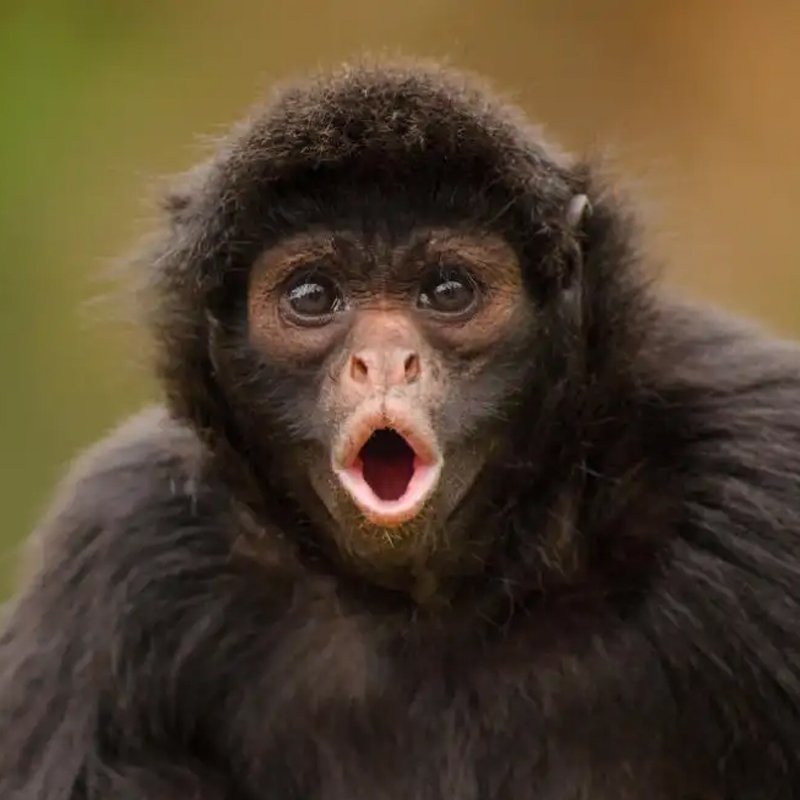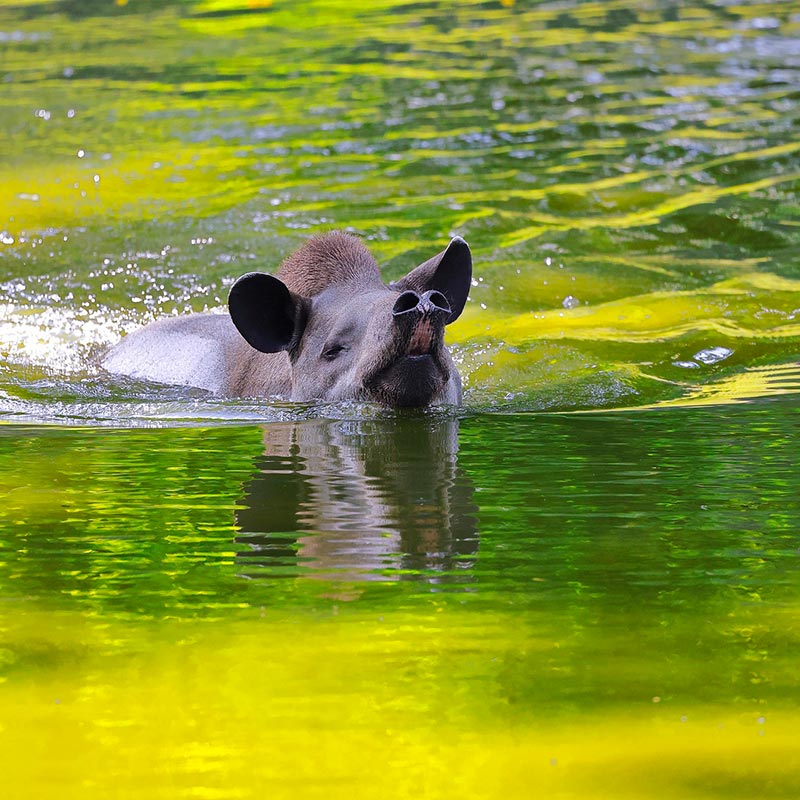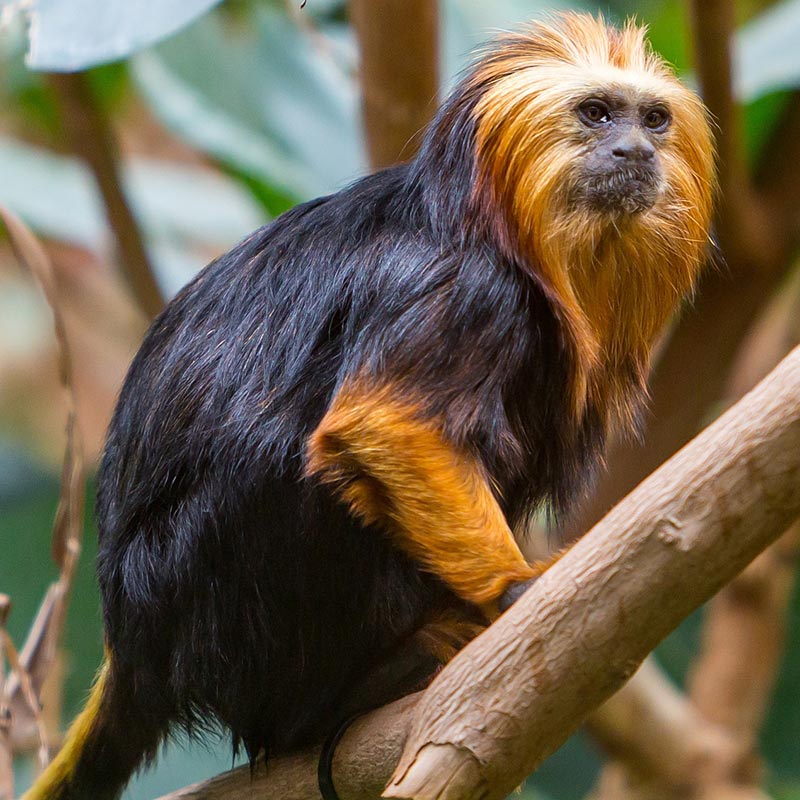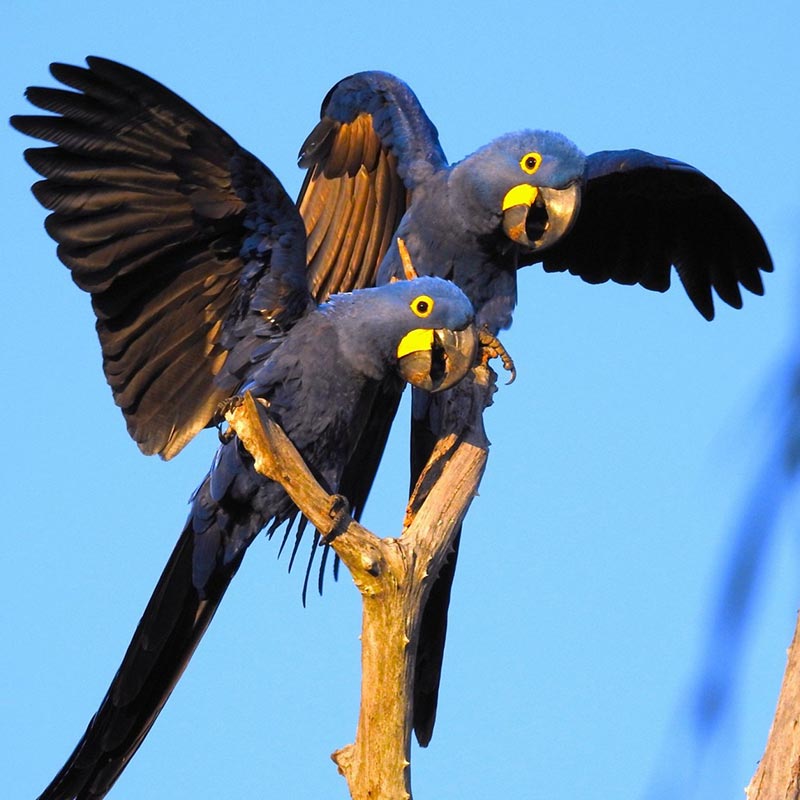TO PRESERVE THE AMAZON
SAVING FROM EXTINCTION

Over 10,000 species are at risk of extinction in Amazon
Cutting deforestation and forest degradation to zero in less than a decade "is critical". Our goal is a massive restoration.
More than 10,000 species of plants and animals are at high risk of extinction due to the destruction of the Amazon rainforest - 35% of which has already been deforested or degraded
Saving the AMAZON
AND EVERYTHING IT REPRESENTS.
The rainforest is a vital bulwark against climate change both for the carbon it absorbs and what it stores.
According to the report, the soil and vegetation of the Amazon hold about 200 billion tonnes of carbon, more than five times the whole world's annual CO2 emissions.
Furthermore the continued destruction caused by human interference in the Amazon puts more than 8,000 endemic plants and 2,300 animals at high risk of extinction, the report added.
Science shows humans face potentially irreversible and catastrophic risks due to multiple crises, including climate change and biodiversity decline, said University of Brasilia professor Mercedes Bustamante during a virtual panel discussion.
Understanding the Amazon.
The Amazon Stream Bowl is home to the biggest rainforest on the planet. The bowl covers around 40% of the South American mainland. Reflecting natural circumstances and past human impact, the Amazon is comprised of a mosaic of environments and vegetation types including rainforests, occasional woodlands, deciduous timberlands, overwhelmed backwoods, and savannas.
The bowl is traversed by the Amazon Stream, the world’s most significant waterway regarding the release, and the second-longest stream on the planet after the Nile. The waterway comprises the north of 1,100 feeders, 17 of which are longer than 1000 miles, and two of which (the Negro and the Madeira) are bigger, regarding volume, than the Congo stream.
Here, a list of just 8 Amazon Rainforest Endangered Species In Need of Saving in 2023
1. Golden Lion Tamarin
There are numerous monkey species that are endemic to the Amazon rainforest in Brazil, one of which is the Golden Lion Tamarin. Its name, which interestingly was first coined by Madame de Pompadour in 1754, derives from its strikingly orange-coloured lion-like mane. The tamarin primarily lives in trees and forage for fruit, insects and even birds by traveling between branches. But deforestation to support the exponential growth of the logging and agriculture industries has destroyed the animal’s natural habitat. Today, only 2-3% of its original rainforest habitat remains, threatening the survival of the species. The International Union for Conservation of Nature (IUCN) currently classifies the Golden Lion Tamarin as an endangered species.
2. Jaguars
The largest cat in the Americas, jaguars are one of the most iconic species in the Amazon currently threatened by the destruction of the ecosystem. These big cats are strong swimmers and climbers, and require large areas of tropical rainforest and stretches of river bank to survive. They also hunt most animals in the Amazon ranging from deers, armadillos, monkeys and lizards, playing an important part in population control of other species. Habitat loss – jaguar now occupy less than half of its historical range, growing conflict with farmers and ranchers, as well as climate change which has increased risk of wildfire and reduced water resources, has driven the animal to be an Amazon rainforest endangered species.
3. Amazon River Dolphin
Also known as the pink river dolphin, the animal lives only in freshwater and is found throughout the Amazon river basins in Bolivia, Brazil, Colombia, Ecuador, Guyana, Peru, and Venezuela. Though the dolphin is protected in Brazil, its population continues to halve every decade and is now a IUCN-listed endangered species as poachers persistently hunt them for their fatty blubber to be used as bait to catch a carnivorous catfish. In other parts of the Amazon, the dolphin faces increasing threats of water pollution as well as dam installations creating habitat fragmentation. As female river dolphins bear only a single calf every four to five years on average, population numbers can be slow and difficult to recover.
4. Giant Otters
As the name suggests, the giant otter is the largest species within the weasel family and are commonly spotted in the Peruvian portion of the Amazon rainforest, where they feed on fish and crustaceans. Much like most threatened species, habitat destruction and illegal hunting has driven its population to worryingly low numbers. The otters also face an additional threat of water contamination from mining and agricultural activities in the Amazon, and overfishing in their habitats. Though the species has been protected under Convention on International Trade of Endangered Species (CITES) since 1973, given the large territory that this animal requires, its protection and conservation can be a complicated task.
5. Uakari Monkey
Another endangered monkey species on this list is the Uakari Monkey, an animal that is incredibly identifiable by its bright red face and bald head – not unlike an old man with a terrible sunburn. This particular primate was named after the Uakari tribe that once lived in the Amazon but has now unfortunately become extinct. However, worrying trends show that the monkey is on track to follow its namesake as extensive deforestation has destroyed much of their natural habitat, making it difficult for the animal to forage and nest. Some of its populations have also been vulnerable to illegal hunting. Native to western Amazon rainforest, the Uakari Monkey plays an important role in seed dispersal and is particularly crucial for its ability to transport seeds at a greater distance than smaller animals.
6. Hyacinth Macaw
Also known as the Blue Macaw and the protagonist of the film Rio, this strikingly blue parrot (and the largest flying parrot in the world) faces growing threats and pressure as its natural habitats and resources continue to shrink from land clearing. They nest almost exclusively in large cavities of old Manduvi trees and were historically widely spread across Brazil. Today, they’re found mostly in small pockets in the Amazon, most notably in central Pará, where human activities have led to 203,460 hectares of tree loss in 2019 alone. Aside from deforestation, the parrot has suffered other threats such as poaching for its unique feathers and the exotic pet trade. Though the animal is still considered only “vulnerable” by the IUCN, many environmentalists believe the species is at the precipice of becoming endangered.
7. South American Tapir
The South American Tapir is a herbivorous mammal that is similar to a pig in shape, feeding primarily on clay licks. This animal is a keystone species for its role as a disperser and predator of tree seeds, supporting the diversity of forests and overall health of the ecosystem. But habitat loss from logging activities and deforestation have been the biggest threat to this species, along with illegal hunting and poaching, driving its population numbers to plummet. The tapir is currently facing extinction in Peru, while in the Argentina portion of the Amazon, tapir populations have declined by an estimated 60% within the last two centuries. Conservation efforts have struggled to help recover the species as they require extensive habitats, and many of its protected areas are surrounded by unprotected private lands.
8. Poison Dart Frogs
There are more than 100 species of poison dart frogs, most of which live in the Amazon. Posison dart frogs are brightly coloured – they can be yellow, copper, gold, red, blue, green, black or a combination of those colours – and notoriously poisonous where its striking hue helps warn off predators. They are also unique as they are active during the day, as opposed to being nocturnal like most frog species. The amphibian is terrestrial with a few arboreals, and loss of its habitats increasing food competition and risks of being preyed upon, causing these frogs to become move closer to extinction. Scientists also found chytridiomycosis, a bacterial disease found in amphibians, to have killed thousands of animals each year, which resulted in the extinction of some species.
One Thing You Can Do: Make Smart Donations
Are you passionate about the environment and eager to do your part in preserving it? Well, look no further! Join us in our fight to Stop Deforestation and Save the Amazon. Here's the deal: every donation you make is 100% tax-deductible. That means you can give back to the environment while also getting something in return. But it's not just about the tax benefits; it's about making a tangible impact on our planet.
The Brazilian Amazon Fund -The Challenge: Stop Deforestation
The Brazilian Amazon Fund will help stop deforestation and safeguard 20 million acres of intact forest.
Through collaboration with local governmental agencies, we will carry out community programs such as tree planting activities, education on forest conservation, and sustainable practices. By promoting community involvement, we seek to engage individuals and communities in protecting the forest as our shared home.
Bilateral Biodiversity Conservation
Our team of experts will work hand in hand with local governmental agencies to advocate for the implementation of laws and policies that protect forests and combat deforestation. Our efforts will be focused on enforcing regulations, monitoring deforestation, and punishing offenders.
Brazilcares and organizations that protect the Amazon Rainforest
1. Brazilcares
2. USAID
3. IBAMA- Brazilian Institute
4. Amazon Watch
5. Amazon Conservation Team
6. Survival International
7. Rainforest Action Network
8. USAID
9. IBAMA- Brazilian Institute
100% of your money goes to our conservation efforts
Our board members and other supporters cover our operating costs, so you can give knowing your whole gift will protect rainforests.
Brazilcares
Make a Difference - Donate Now!
Donating to a worthy cause can be a powerful way to make a difference. Your contribution can help fund critical resources and programs to improve the lives of those in need. No donation is too small – any amount makes a difference and goes towards making the world a better place. Donate now and support causes close to your heart!
Start Donating Now for a Cause that is dear to you!
BRAZILCARES INC., uses your donation to work hard to Reforestation with direct seeding, it works ! Our reforestation projects work with governments, NGO's, local organizations and communities to restore threatened forests and landscapes .




